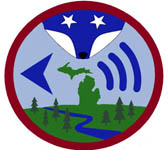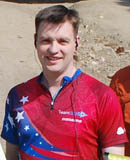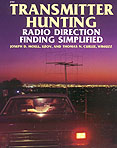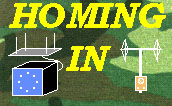
USA 2024 Championship participants at the awards ceremony. (Photo by Uncharted)


 Central Michigan was the site for the 2024 USA Radio-Orienteering Championships, combined with the biennial ARDF championships of International Amateur Radio Union (IARU) Region 2 (North and South America). Practice and championship courses took place in well-mapped sites near Chelsea, Michigan. Chelsea is 50 miles west of downtown Detroit, 40 miles southeast of Lansing and 15 miles west of Ann Arbor.
Central Michigan was the site for the 2024 USA Radio-Orienteering Championships, combined with the biennial ARDF championships of International Amateur Radio Union (IARU) Region 2 (North and South America). Practice and championship courses took place in well-mapped sites near Chelsea, Michigan. Chelsea is 50 miles west of downtown Detroit, 40 miles southeast of Lansing and 15 miles west of Ann Arbor.
Event Director was Joseph Burkhead KE8MKR (at right), who has won numerous medals at USA's championships beginning in 2017. He brought home a team bronze award for his performance in the 80-meter classic event at the 2018 World ARDF Championships in Sokcho, Korea. KE8MKR was the primary course setter for the competitions, assisted by Thomas Chen and Gavin Burkhead. Also providing support were members of the Southern Michigan Orienteering Club and the Chelsea Amateur Radio Club.
Attending were over four dozen fans of on-foot hidden transmitter hunting, representing thirteen states in the USA plus Canada, Australia, Uganda, and China. Headquarters hotel was the Comfort Inn in Chelsea.
On October 5 and 6, just before the championships, a training camp was put on by Charles and Nadia Scharlau, NZØI and KO4ADV, at Silver Lake in Pinckney State Recreation Area. They introduced techniques and strategies for navigating and locating transmitters in the woods, including map and compass techniques.
The training days were followed by a day for rest and tourism, including a field trip to the Henry Ford Museum of American Innovation and the Ford Rouge F-150 factory in Dearborn. Then October 8 and 9 were practice days at Park Lyndon, with mini-courses for all four ARDF events. Eighteen radio-orienteers of various skill levels took part in these practice sessions. On the evening of October 9 were opening ceremonies that included a presentation on the Peach Mountain Radio Astronomy Observatory by Dr. James Cutler of the Department of Aerospace Engineering at the University of Michigan.
October 10 was the first day of formal competition at Hudson Mills Metropark. That day's event was the sprint, which was added to championship ARDF in 2012. A sprint course has two loops. The first has five slow-keyed 80-meter transmitters on one frequency, each transmitting for 12 seconds in sequence. The second has five fast-keyed 80-meter transmitters on another frequency, sending the same sequence. Competitors run through the start corridor leading to the area with slow-keyed transmitters. After finding all of the required transmitters from the first loop in any order, they run through a spectator corridor to the area with fast keyed foxes. After finding all required transmitters from this loop in any order, they run to the finish line.
The 2024 sprint course included open grass, forests, bridges, a tunnel. Gheorghe Fala was fastest in M21 (males ages 21 to 39), which was the only category required to find all ten sprint foxes. He did the course in 27:09. The fastest pace on the sprint course was that of Vadim Afonkin, KB1RLI in M50, who found his required six transmitters in 19:16. Among women, the fastest pace was by Erin Hammer in W35, finding her required eight transmitters in 33:30.
The October 11 event was foxoring at Winnewana Forest in the Waterloo State Recreation Area. Foxoring is another relatively new event that closely resembles classic orienteering because there are circles on the provided map near the continuously-transmitting low-power 80-meter transmitters. Competitors use their orienteering skills to get to the circle locations, then perform direction-finding to home in on the foxes that can only be heard there.
The foxoring course was described by participants as rugged and lengthy. Gheorghe Fala was best again in M21, finding every fox in 1:02:54. He was almost 30 minutes faster than the second-place finisher in that category. Fastest pace was by Alexander Myachin in M50, finding seven foxes in 50:30.
 The first classic event took place October 12 on the two-meter band in Waterloo State Recreation Area. These transmitter hunts are called classics because they were the first form of radio-orienteering, beginning over forty years ago in northern Europe and Scandinavia. Five transmitters are placed in a wooded area of 1000 acres or more. They transmit for 60 seconds each in rotating order on the same frequency. Competitors are individually timed as they travel from the starting point to the finish, finding the transmitters required for their category along the way in any order. To insure fairness, there are many additional rules for classic events, covering impounds, start procedures, course monitoring, protests and so forth.
The first classic event took place October 12 on the two-meter band in Waterloo State Recreation Area. These transmitter hunts are called classics because they were the first form of radio-orienteering, beginning over forty years ago in northern Europe and Scandinavia. Five transmitters are placed in a wooded area of 1000 acres or more. They transmit for 60 seconds each in rotating order on the same frequency. Competitors are individually timed as they travel from the starting point to the finish, finding the transmitters required for their category along the way in any order. To insure fairness, there are many additional rules for classic events, covering impounds, start procedures, course monitoring, protests and so forth.
In the five-fox M21 category, Eduard Nasybulin found them all in 1:59:35 for first place. In categories requiring four foxes, Dmitry Korolev in M50 was best at 1:06:20.&bnsp; In categories requiring three foxes, William Wright WB6CMD (at right) in M60 was best among men at 1:36:25 and Nadia Scharlau KO4ODV in W55 was best among women at 1:15:34.
In addition to sport and spectrum policing, radio direction finding can be lifesaving. After the two-meter classic, there was a search-and-rescue exhibition and contest with two Michigan Civil Air Patrol (CAP) squadrons competing against each other and a team from California consisting of William Wright WB6CMD and Michael Hart KC6MEH. Winner was the CAP Jackson Squadron.
Sunday, October 13 was the final competition day with the 80-meter classic event at Brighton State Recreation Area. It is typical for 80-meter course times to be faster on average than for two-meter equivalent courses. Eighty-meter signals do not reflect from terrain features to cause incorrect and confusing bearings like two-meter signals often do. The nulls on 80-meter ARDF sets provide sharper bearings than the pattern peaks of two-meter yagis. In addition, 80-meter receiver-antenna sets are smaller, lighter and less awkward to carry than two-meter sets.
In this 80-meter classic, Eduard Nasybulin was winner in the five-fox M21 category, finding them all in 1:22:44. In categories requiring four foxes, Dmitry Korolev in M50 was best male competitor again at exactly 57 minutes and Adalia Schafrath-Craig in W19 found hers in 1:17:17. In categories requiring three foxes, Joseph Huberman K5JGH in M70 was best among men at 1:20:15 and Nadia Scharlau KO4ODV in W55 was best among women at 1:04:09.
Congratulations to all of the gold medal winners. They are, in alphabetical order:
Anastasia Afonkin W14 sprint foxor 2m 80m
Vadim Afonkin KB1RLI M50 sprint
Jack Bramham VK3WWW M70 2m
Ruth Bromer WB4QZG W75 sprint foxor 2m 80m
Maria Burrus W45 foxor 2m 80m
Gheorghe Fala M21 sprint foxor
Sandra Quinn Giovannini W35 foxor
Erin Hammer W35 sprint
James Harker M14 2m
Joseph Huberman K5JGH M70 sprint foxor 80m
Lori Huberman W35 2m 80m
Dmitry Korolev M50 2m 80m
Alex Lefgren M12 foxor
Natalia Leoni W55 sprint
Alexander Myachin M50 foxor
Eduard Nasybulin M21 2m 80m
Adalia Schafrath-Craig W19 sprint foxor 2m 80m
Nadia Scharlau KO4ADV W55 foxor 2m 80m
Dax Welborn M19 2m 80m
William Wright WB6CMD M60 sprint foxor 2m 80m
The official championships Web site has complete results plus many photos of the action.

 Go to Championships Foxhunting News -- Recent and upcoming ARDF championships events
Go to Championships Foxhunting News -- Recent and upcoming ARDF championships events
Go to International-Style Foxhunting Comes To The Americas -- How we're getting the ball rolling
Go to Equipment Ideas for Radio-Orienteering -- Simple and inexpensive receiving and transmitting solutions
Go to Radio-Orienteering News for Southern California -- Results and stories of recent radio-orienteering events in southern California, plus announcements of upcoming ones.
Go to Foxhunting for Scouts -- Let's get the kids involved
 Back to the Homing In home page
Back to the Homing In home page
This page updated 21 June 2025